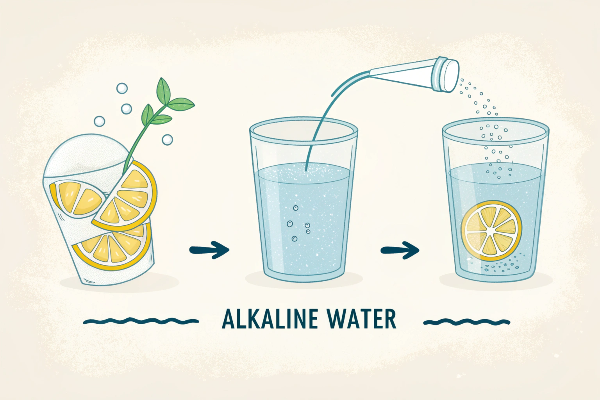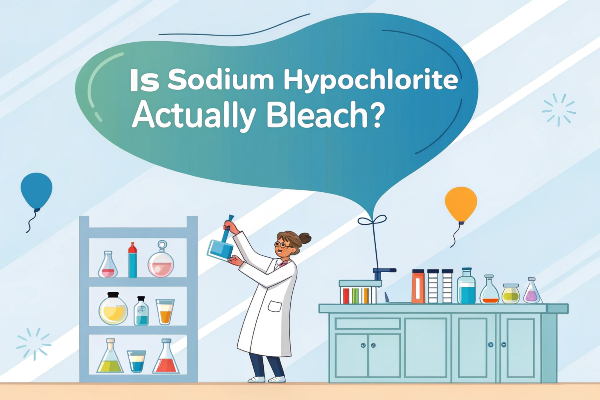Struggling to choose between titanium and graphite anodes for seawater electrolysis? Feeling lost in the sea of technical jargon and conflicting claims? You’re not alone.
Titanium anodes generally outperform graphite anodes in seawater electrolysis due to their superior corrosion resistance and higher energy efficiency. Their specialized coatings provide long-term stability and reduce maintenance needs, making them ideal for most applications.

But the decision isn’t always straightforward. There are nuances and specific scenarios to consider. Let’s dive into a detailed comparison to help you make the best choice for your needs.
What are the key corrosion resistance differences between titanium anodes and graphite anodes in seawater environments?
Worried about your anodes dissolving away in harsh seawater? The constant threat of corrosion can lead to costly replacements and frustrating downtime, right?
Titanium anodes exhibit significantly better corrosion resistance than graphite anodes in seawater. This is primarily due to the formation of a protective passive layer on the titanium surface, which is often enhanced with specialized coatings like iridium and ruthenium oxide.

Dive Deeper: Unmasking the Corrosion Mechanisms
To really understand the difference, let’s break down why each material behaves the way it does.
| Feature | Titanium Anode | Graphite Anode |
|---|---|---|
| Corrosion Mechanism | Formation of a passive layer (e.g., iridium and ruthenium oxide coating) that resists Cl⁻ attack. | No passive layer; prone to oxidation, forming CO₂ or carbonates. |
| Corrosion Rate | Extremely low (≤ 0.001 mm/year). | Significantly higher (0.1-1 mm/year). |
| Stability | High stability and high oxygen evolution potential (OER), demonstrated through polarization curves and EIS. | Lower stability; susceptible to degradation and reduced performance over time. |
| Lifespan | 5-10 years in typical seawater electrolysis applications. | 1-2 years, requiring more frequent replacement. |
| Keywords | seawater corrosion resistance1, titanium anode passive layer2, longevity in electrolysis, Cl⁻ resistance | graphite oxidation mechanism3, |
The passive layer on titanium anodes acts like a shield, protecting the underlying metal. Graphite, on the other hand, lacks this natural defense and directly reacts with the environment. I once witnessed, and it’s very impressive.
Which anode type offers higher energy efficiency in seawater electrolysis for hydrogen production?
Concerned about skyrocketing energy bills eating into your profits? High energy consumption not only costs money but also impacts the environmental footprint of your hydrogen production.
Titanium anodes, particularly those with Dimensionally Stable Anode (DSA) coatings, offer significantly higher energy efficiency than graphite anodes in seawater electrolysis for hydrogen production. This is due to their lower overpotential for oxygen evolution.

Dive Deeper: Electrocatalytic Activity and Its Impact
Let’s get into the nitty-gritty of why titanium is more efficient.
| Feature | Titanium Anode (DSA Coating) | Graphite Anode |
|---|---|---|
| Electrocatalytic Activity | High; low oxygen evolution overpotential (around 300 mV). | Lower; high overpotential (≥ 800 mV). |
| Current Efficiency | Exceeds 85%. | Typically 60-70%, with more side reactions (like chlorine generation). |
| Power Consumption | Lower kWh/kg H₂ at various current densities. | Higher kWh/kg H₂. |
| Renewable Energy Compatibility | More compatible with fluctuating renewable energy sources (wind/solar) due to high efficiency under dynamic conditions. | Less efficient under fluctuating conditions. |
| Keywords | titanium anode electrocatalytic activity4, overpotential reduction5, hydrogen production efficiency6, OER/Chlorine evolution balance | energy consumption comparison |
The lower overpotential of titanium means less energy is wasted as heat, and more goes directly into splitting water molecules. I remember reading some research paper that compared various metal oxide coatings on titanium, which greatly improved the energy efficiency.
How do the maintenance requirements of titanium anodes compare to graphite in harsh seawater conditions?
Tired of constant maintenance and unexpected shutdowns? Frequent anode cleaning and replacement not only disrupt operations but also add significant labor and material costs.
Titanium anodes require significantly less maintenance than graphite anodes in harsh seawater conditions. Their self-cleaning coatings and robust construction minimize downtime and reduce long-term operational costs.

Dive Deeper: A Closer Look at Maintenance Needs
Let’s break down the specific maintenance challenges and how each anode type handles them.
| Feature | Titanium Anode | Graphite Anode |
|---|---|---|
| Maintenance Challenges | Minimal; self-cleaning coatings reduce scaling; strong impact resistance. | Surface deposits (carbonates, biofilms) require regular cleaning; mechanically brittle, prone to fracture. |
| Maintenance Cycle | Inspections typically every 2-3 years. | Inspections every 6 months, with more frequent replacements needed. |
| Cost Model (5 years) | Total maintenance cost is significantly lower (potentially 3-5 times lower than graphite). | Higher total maintenance cost due to frequent cleaning, repairs, and replacements. |
| Keywords | maintenance cost analysis7, anode fouling prevention8, lifetime cost of ownership9, seawater electrolysis system reliability | operational downtime |
The inherent durability of titanium, coupled with advanced coatings, means less hands-on intervention is required. I was in the field visiting a seawater electrolysis plant.
What specific anode coatings or modifications can enhance the performance of titanium vs. graphite in seawater applications?
Are you seeking cutting-edge solutions to maximize anode performance? Wondering if there are ways to push the boundaries of efficiency and longevity even further?
While both titanium and graphite anodes10 can be modified, titanium anodes offer far greater flexibility and potential for performance enhancement through specialized coatings11. These coatings can be tailored to address specific challenges in seawater electrolysis.

Dive Deeper: Exploring Coating and Modification Options
Let’s examine the specific enhancements available for each anode type.
| Feature | Titanium Anode | Graphite Anode |
|---|---|---|
| Coating/Modification | Iridium-tantalum oxide (IrO₂-Ta₂O₅) coating for superior Cl⁻ corrosion resistance; gradient coatings for improved adhesion; doping with Sn or Ru for enhanced oxygen evolution selectivity. | Surface impregnation with epoxy resin or plating with precious metals (e.g., platinum) for temporary oxidation resistance (but at a cost comparable to titanium). |
| Flexibility | Highly flexible; coatings can be customized for specific challenges (e.g., halogens, high pH). | Limited flexibility; modifications offer only temporary improvements and may not be cost-effective. |
| Keywords | iridium-based DSA coatings, chlorine evolution suppression12, coating adhesion in seawater13, customized anode design | graphite surface modification |
Titanium’s adaptability allows for fine-tuning the anode’s properties to match the specific demands of the electrolyte and operating conditions.
Are there scenarios where graphite anodes might still be preferred over titanium despite lower corrosion resistance?
Are you on a tight budget or working on a short-term project? While titanium generally outperforms graphite, are there niche situations where the lower cost of graphite might make it a viable option?
Yes, there are specific scenarios where graphite anodes might be preferred over titanium, primarily due to their lower initial cost. These scenarios typically involve short-term projects, low current density applications, or situations where the anode serves as a sacrificial component.

Dive Deeper: Identifying Niche Applications for Graphite
Let’s explore the specific circumstances where graphite might be a justifiable choice.
| Feature | Scenario | Explanation |
|---|---|---|
| Short-term/Small-scale Projects | Electrolysis cycle is short (e.g., < 1 year) and initial cost is a primary concern. | The lower upfront cost of graphite may outweigh the shorter lifespan and lower efficiency. |
| Low Current Density Applications | Required hydrogen production is low. | The disadvantage of higher overpotential is less significant at low current densities. |
| Sacrificial Anode Design | Anode is intentionally designed to corrode to protect other components (e.g., cathodic protection). | Graphite’s lower cost makes it a more economical choice for sacrificial applications. |
| Limitations in Seawater | Chlorine-containing byproducts of electrolysis can pollute the environment or corrode adjacent equipment. | |
| Keywords | graphite anode cost advantage14, short-term electrolysis projects15, low-current density applications16, economic feasibility assessment | sacrificial anode utilization |
It’s crucial to remember that even in these scenarios, the limitations of graphite in seawater (byproduct generation, corrosion) must be carefully considered.
Conclusion
Titanium anodes are the clear winner for most seawater electrolysis applications, offering better corrosion resistance, energy efficiency, and lower maintenance. However, graphite can be a cost-effective option for short-term, low-demand, or sacrificial use cases.
-
Understanding seawater corrosion resistance is crucial for selecting the right anode material, ensuring longevity and performance in marine environments. ↩
-
Exploring the titanium anode passive layer reveals its protective properties, which are vital for preventing corrosion in harsh conditions. ↩
-
Learning about the graphite oxidation mechanism helps in understanding its limitations and the need for more frequent replacements in seawater. ↩
-
Understanding the electrocatalytic activity of titanium anodes can help optimize hydrogen production processes and reduce energy costs. ↩
-
Exploring overpotential reduction can reveal strategies to enhance energy efficiency in hydrogen production, crucial for cost savings. ↩
-
Learning about hydrogen production efficiency can guide improvements in electrolysis systems, leading to better energy management. ↩
-
Understanding the maintenance cost analysis can help you make informed decisions about anode selection and operational efficiency. ↩
-
Exploring fouling prevention techniques can enhance the longevity and performance of your anodes, reducing downtime and costs. ↩
-
Evaluating the lifetime cost of ownership will provide insights into long-term savings and operational efficiency for your projects. ↩
-
Understand the limitations of graphite anodes compared to titanium, and why titanium may be the better choice for seawater applications. ↩
-
Learn how specialized coatings can significantly enhance anode performance, addressing specific challenges in seawater applications. ↩
-
Learn about chlorine evolution suppression techniques to improve efficiency in electrochemical applications. ↩
-
Discover the critical factors influencing coating adhesion in seawater, essential for marine applications. ↩
-
Understanding the cost benefits of graphite anodes can help you make informed decisions for budget-sensitive projects. ↩
-
Explore how graphite anodes can be a cost-effective solution for short-term electrolysis applications. ↩
-
Learn about the performance of graphite anodes in low-current density scenarios and their economic advantages. ↩





